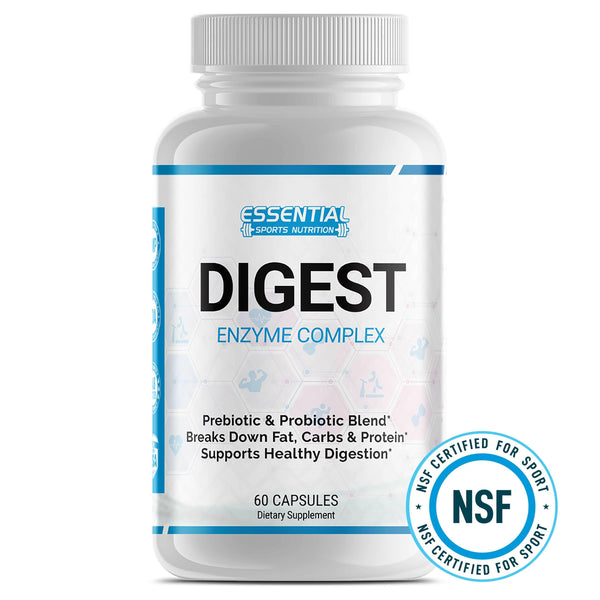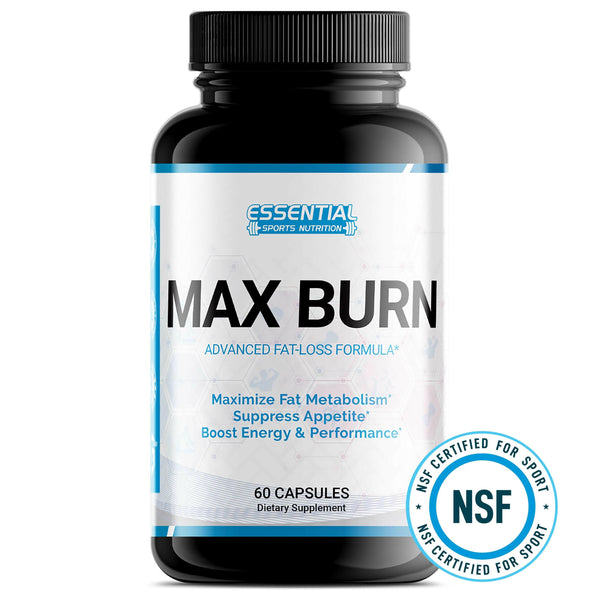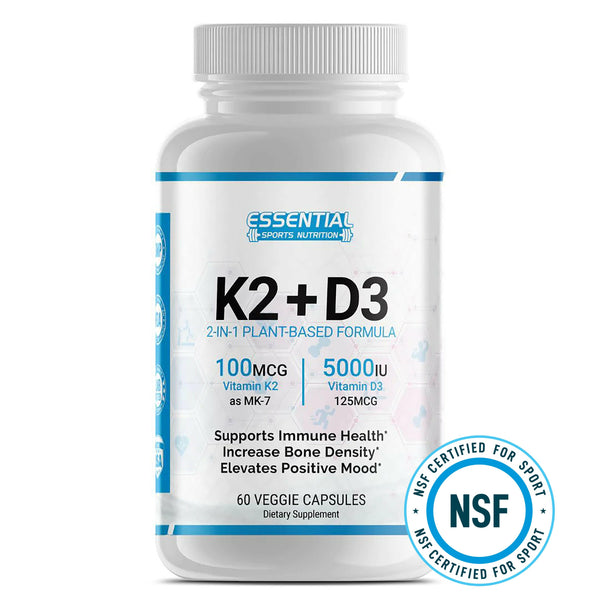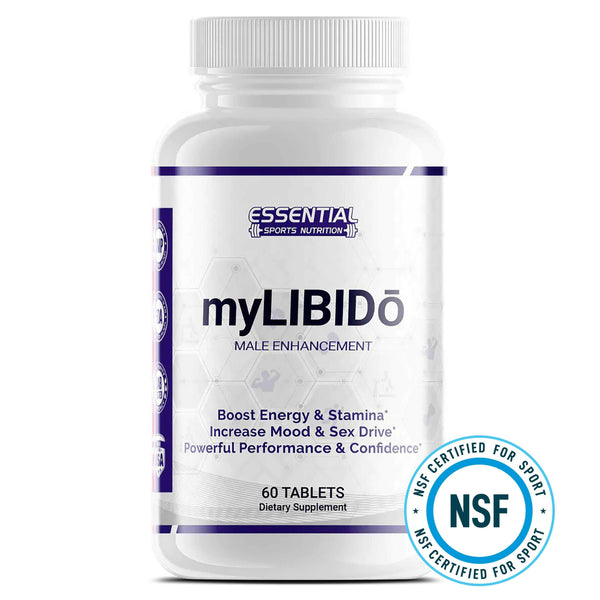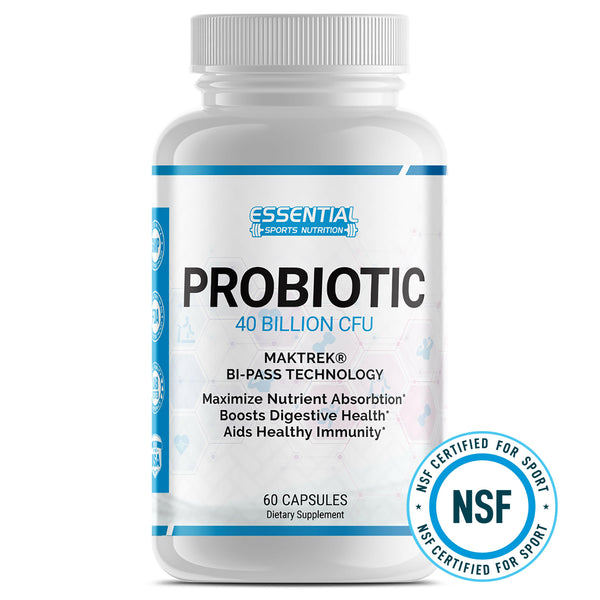The Flexitarian Diet: Benefits, Food Lists, and How to Get Started
Are you looking for a healthy and sustainable eating plan that allows flexibility and promotes overall well-being? Look no further than the flexitarian diet! Combining the best of both worlds, this eating style focuses on a plant-based diet while still allowing occasional meat consumption. In fact, the flexitarian diet ranks #2 on the U.S. News Best Diet Rankings, just behind the Mediterranean diet.
So, what are the benefits of adopting a flexitarian lifestyle? Let's dive in and explore the positive impact it can have on your health and the environment.
Key Takeaways:
- The flexitarian diet is a combination of flexible and vegetarian eating styles.
- It is ranked #2 on the U.S. News Best Diet Rankings, right after the Mediterranean diet.
- The diet focuses on a plant-based approach while allowing occasional meat consumption.
- Benefits include decreased risk of heart disease, weight loss, reduced risk of type 2 diabetes, prevention of cancer, and a lower carbon footprint.
- The flexitarian diet offers a simple, healthy, and effective approach to long-term weight loss.
What is the Flexitarian Diet?

The flexitarian diet is a unique eating style that combines the flexibility of an omnivorous diet with the principles of vegetarianism. It offers a middle ground for individuals who want to enjoy the health benefits of a plant-based diet while still allowing occasional meat consumption. The focus of the flexitarian diet is on plant-based foods such as fruits, vegetables, whole grains, legumes, and nuts, which are rich in essential nutrients and provide numerous health benefits.
Unlike strict vegetarian or vegan diets, flexitarians are flexible and adaptable to individual preferences and commitment levels. It allows for a gradual transition from meat-centric meals to plant-based meals, making it easier for people to incorporate healthy choices into their daily lives. Instead of requiring an immediate meatless diet, this approach encourages individuals to increase their intake of plant-based foods while reducing their consumption of meat, which can have a positive impact on their overall health and well-being.
Emphasizing plant-based foods while allowing occasional meat consumption, the flexitarian diet offers a balanced and sustainable approach to eating.
The flexitarian diet is not about completely eliminating meat from your diet but instead about making conscious choices that prioritize plant-based foods. By adopting this eating style, individuals can enjoy the health benefits of a plant-based diet, such as reduced risk of chronic diseases, improved weight management, and increased energy levels, while still enjoying the occasional meat-based meal.
Overall, the flexitarian diet offers a flexible and inclusive approach to healthy eating. It allows individuals to reap the benefits of a plant-based diet while still being able to enjoy the flavors and textures of meat. By focusing on plant-based foods and reducing meat consumption, individuals can achieve a healthier lifestyle while making sustainable choices for their own well-being and the environment.
Guidelines for Animal Product and Meat Consumption on the Flexitarian Diet

As individuals adopt the flexitarian diet, they follow a structured approach to gradually reduce their meat consumption. The diet consists of three stages, each designed to increase the emphasis on plant-based foods and decrease reliance on meat. These guidelines help individuals transition to a more sustainable and healthier eating style.
Stage 1: Meat Two Days a Week
In the first stage of the flexitarian diet, individuals forgo meat for two days each week. During the remaining five days, they can include moderate amounts of meat in their meals, with the recommended limit being 28 ounces per week. This stage allows individuals to experiment with plant-based recipes and explore various sources of protein.
Stage 2: Vegetarian Three to Four Days a Week
In the second stage, individuals increase their vegetarian days to three or four days per week. Meat consumption is limited to the remaining days, with an intake of no more than 18 ounces per week. This stage encourages further exploration of plant-based meals and promotes a more sustainable approach to eating.
Stage 3: Vegetarian Five Days a Week
The final stage of the flexitarian diet is a semi-vegetarian diet. It follows a vegetarian eating style for five days a week. On the remaining two days, individuals can consume a maximum of 9 ounces of meat. This stage encourages individuals to make plant-based meals a central part of their diet, while still allowing for occasional meat consumption.
| Stage | Meat Consumption |
|---|---|
| Stage 1 | Forgo meat 2 days a week, limit overall meat consumption to 28 ounces per week |
| Stage 2 | Follow a vegetarian diet 3-4 days a week, consume no more than 18 ounces of meat during remaining days |
| Stage 3 | Follow a vegetarian diet 5 days a week, consume a maximum of 9 ounces of meat on remaining 2 days |
It is important to choose lean cuts of beef, chicken, and turkey during all stages. Additionally, individuals are encouraged to opt for organic and free-range options whenever possible. These guidelines ensure that the flexitarian diet remains balanced, sustainable, and aligned with the principles of healthy eating.
The Benefits of the Flexitarian Diet

The flexitarian diet offers numerous health benefits that make it an attractive option for individuals looking to improve their overall well-being. This plant-based eating style, which allows occasional meat consumption, has been shown to reduce the risk of heart disease, promote weight loss, and prevent type 2 diabetes. Additionally, by embracing the flexitarian diet, individuals can make a positive impact on the environment by reducing their carbon footprint.
One of the significant benefits of the flexitarian diet is its ability to lower the risk of heart disease. Plant-based foods, such as fruits, vegetables, whole grains, legumes, and nuts, are staples of the flexitarian diet and are known to be heart-healthy. The emphasis on these foods, along with the reduction in meat consumption, can help lower cholesterol levels and reduce the risk of cardiovascular events.
Weight loss is another notable benefit of the flexitarian diet. By focusing on plant-based foods and reducing meat consumption, individuals naturally consume fewer calories. The diet's emphasis on whole, unprocessed foods also contributes to better satiety, improved portion control, and reduced cravings, making it easier to maintain a calorie deficit and achieve weight loss goals.
Furthermore, the flexitarian diet promotes environmental sustainability. By reducing meat consumption and supporting sustainable agriculture, individuals can significantly decrease their carbon footprint. The livestock industry is a major contributor to greenhouse gas emissions, and shifting towards a more plant-based diet helps mitigate climate change and foster a more sustainable future.
Health Benefits of the Flexitarian Diet
| Benefit | Description |
|---|---|
| Reduced risk of heart disease | The flexitarian diet, with its focus on plant-based foods and reduced meat consumption, can lower cholesterol levels and decrease the risk of cardiovascular events. |
| Weight loss | By incorporating more plant-based foods and reducing calorie-dense meats, the flexitarian diet can lead to weight loss and improved body composition. |
| Prevention of type 2 diabetes | The flexitarian diet, rich in fiber and low in processed foods, can help regulate blood sugar levels and reduce the risk of developing type 2 diabetes. |
| Environmental sustainability | By reducing meat consumption and supporting sustainable agriculture, the flexitarian diet contributes to a lower carbon footprint and a more sustainable planet. |
It's important to note that while the flexitarian diet offers many health benefits, individuals should be mindful of potential nutrient deficiencies, particularly in vitamin B12, zinc, and calcium. Regular monitoring and supplementation, if necessary, can help ensure that nutritional needs are met. Additionally, individuals with digestive issues or specific dietary considerations should consult with a healthcare professional or registered dietitian before making any significant dietary changes.
Foods to Include on the Flexitarian Diet

The flexitarian diet encourages the inclusion of a wide variety of nutrient-dense plant-based foods. By incorporating a diverse range of fruits, vegetables, plant proteins, and whole grains into your meals, you can ensure a balanced and healthy eating plan. Here are some key food groups to focus on when following the flexitarian diet:
1. Plant-Based Proteins
Plant-based proteins play a crucial role in the flexitarian diet as they serve as alternatives to meat sources. Beans, lentils, chickpeas, and tofu are excellent sources of protein that can be easily incorporated into various dishes. These plant-based proteins are not only rich in protein but also provide essential vitamins, minerals, and dietary fiber.
2. Whole Grains
Whole grains are an important component of the flexitarian diet as they provide sustained energy and essential nutrients. Opt for whole grain options such as brown rice, quinoa, whole wheat bread, and oats. These grains are high in fiber, vitamins, and minerals, making them a healthy and filling choice.
3. Fruits and Vegetables
Fruits and vegetables should form a significant part of the flexitarian diet. They are packed with vitamins, minerals, and antioxidants that support overall health and well-being. Aim to include a variety of colorful fruits and vegetables in your meals to ensure you receive a wide range of nutrients.
Incorporating these food groups into your flexitarian diet will provide you with the necessary nutrients for optimal health. It's important to prioritize whole, unprocessed foods and experiment with different recipes to keep your meals exciting and enjoyable.
| Plant-Based Proteins | Whole Grains | Fruits and Vegetables |
|---|---|---|
| Beans | Brown rice | Apples |
| Lentils | Quinoa | Oranges |
| Chickpeas | Whole wheat bread | Spinach |
| Tofu | Oats | Broccoli |
Risks and Considerations of the Flexitarian Diet
The flexitarian diet offers many health benefits, but it's important to be aware of potential risks and considerations. One of the main concerns is the possibility of nutrient deficiencies, particularly in vitamin B12, zinc, and calcium. Since the diet emphasizes plant-based foods and limits meat consumption, it's essential to ensure adequate intake of these essential nutrients.
For vitamin B12, which is primarily found in animal products, it may be necessary to incorporate fortified foods or consider supplementation. Zinc can be obtained from plant-based sources like legumes, whole grains, and nuts, but careful attention is needed to ensure sufficient intake. Calcium, crucial for bone health, can be obtained from plant-based sources such as leafy greens, tofu, and fortified plant-based milk.
Individuals with irritable bowel syndrome (IBS) or other digestive issues should also consider their tolerance to plant-based foods. Some individuals may experience digestive discomfort or increased gas production when consuming certain types of beans, legumes, or cruciferous vegetables. It's advisable to experiment with different foods and cooking methods to find what works best for each individual's digestive system.
Getting Started on the Flexitarian Diet

The flexitarian diet offers a flexible and gradual transition to a plant-based eating style, making it accessible to individuals who want to reduce their meat consumption. Here are some steps to help you get started:
- Set specific goals: Determine how many days per week you want to include plant-based meals in your diet. Start with a realistic goal, such as two or three days a week, and gradually increase it over time.
- Experiment with new recipes: Explore vegetarian and plant-based recipes to add variety to your meals. Look for creative ways to incorporate plant proteins like beans, lentils, and tofu into your favorite dishes.
- Stock up on plant-based pantry staples: Replace processed foods with nutrient-dense whole grains, legumes, nuts, and seeds. These ingredients will become the foundation of your plant-based meals.
- Plan your meals: Take time to plan your meals and snacks for the week ahead. This will help you stay organized and ensure you have all the necessary ingredients on hand.
- Shop smart: When purchasing meat, opt for lean cuts and consider organic or free-range options. Choose a variety of fruits and vegetables to ensure you’re getting a wide range of nutrients.
- Embrace gradual changes: Instead of eliminating meat completely, start by reducing portion sizes and increasing the amount of plant-based foods on your plate. Over time, you can continue to adjust your meals according to your preferences and comfort level.
Remember, the flexitarian diet is flexible and adaptable to your individual needs and lifestyle. It's important to listen to your body and adjust your eating patterns accordingly. Consulting with a registered dietitian can also provide personalized guidance and ensure you're meeting your nutritional needs on the flexitarian diet.
Example Meal Plan:
| Day | Breakfast | Lunch | Dinner |
|---|---|---|---|
| Monday | Oatmeal with berries and nuts | Quinoa salad with roasted vegetables | Grilled tofu with stir-fried vegetables |
| Tuesday | Scrambled eggs with whole grain toast | Veggie wrap with hummus | Black bean and sweet potato chili |
| Wednesday | Smoothie with spinach, banana, and almond milk | Chickpea salad with mixed greens | Vegetable stir-fry with brown rice |
| Thursday | Yogurt with granola and fruit | Veggie sushi rolls | Lentil curry with naan bread |
| Friday | Avocado toast with a side of fruit | Quinoa and black bean bowl | Sweet potato and black bean enchiladas |
The Flexitarian Diet and Weight Loss

The flexitarian diet is known for its effectiveness in promoting weight loss and maintaining a healthy lifestyle. By focusing on a plant-based diet and reducing meat consumption, individuals naturally lower their calorie intake, leading to weight loss. Numerous studies have shown that flexitarian diets contribute to significant weight reduction and a lower body mass index (BMI).
Incorporating Plant-Based Foods
A key aspect of the flexitarian diet is the emphasis on incorporating nutrient-dense, plant-based foods into daily meals. These include fruits, vegetables, whole grains, beans, lentils, tofu, nuts, and seeds. These plant-based foods are rich in fiber, vitamins, minerals, and antioxidants, which provide essential nutrients while promoting a feeling of fullness and satiety.
By filling up on these high-fiber, low-calorie foods, individuals are less likely to overeat or indulge in unhealthy snacks. The flexitarian diet encourages portion control and promotes healthy food choices, which are essential for successful weight loss.
The Role of Reduced Calorie Intake
The reduction in meat consumption on the flexitarian diet also contributes to weight loss. Meat is typically higher in calories and saturated fat compared to plant-based proteins. By replacing meat with plant-based proteins, individuals reduce their overall calorie intake and unhealthy fat consumption.
Additionally, the flexitarian diet is flexible and allows occasional meat consumption. This flexibility prevents feelings of deprivation and promotes long-term adherence to the diet. By incorporating lean cuts of meat and choosing organic, free-range, or grass-fed options, individuals can still enjoy the occasional meat-based meal while staying on track with their weight loss goals.
| Flexitarian Diet and Weight Loss | Benefits |
|---|---|
| 1. Reduced Calorie Intake | - Lower risk of overeating - Improved portion control |
| 2. Emphasis on Plant-Based Foods | - High in fiber and nutrients - Promotes satiety |
| 3. Flexibility and Adherence | - Allows occasional meat consumption - Prevents feelings of deprivation |
Combining the flexitarian diet with regular physical activity further enhances its weight loss benefits. Exercise helps increase calorie expenditure, build lean muscle mass, and improve overall fitness. It is recommended to engage in at least 150 minutes of moderate-intensity exercise per week, along with strength training exercises.
The flexitarian diet offers a sustainable and enjoyable approach to weight loss. By focusing on plant-based foods, reducing meat consumption, and incorporating regular exercise, individuals can achieve their weight loss goals while maintaining a healthy and balanced lifestyle.
Environmental Impact of the Flexitarian Diet

The flexitarian diet not only benefits personal health but also has a positive impact on the environment. By reducing meat consumption and supporting sustainable agriculture, individuals can significantly decrease their carbon footprint and contribute to a more sustainable planet.
According to a study published in the journal Science, the production of meat contributes to greenhouse gas emissions, deforestation, and water pollution. Livestock farming is responsible for approximately 14.5% of global greenhouse gas emissions, making it a major contributor to climate change. Adopting a flexitarian diet can help reduce these emissions, as plant-based foods have a lower carbon footprint compared to animal products.
Conclusion
The flexitarian diet offers a flexible and inclusive approach to healthy eating. By combining the benefits of a plant-focused diet with occasional meat consumption, individuals can enjoy the best of both worlds. The diet provides numerous health benefits, including a reduced risk of heart disease, weight loss, and prevention of type 2 diabetes.
However, it's important to address potential nutrient deficiencies and individual considerations when following the flexitarian diet. Cutting back on meat consumption may lead to deficiencies in vitamin B12, zinc, and calcium, so it's crucial to ensure a balanced and varied diet. Consulting with a registered dietitian can help ensure optimal nutrient intake.
Furthermore, the flexitarian diet promotes environmental sustainability by reducing meat consumption and supporting sustainable agriculture. By making this dietary choice, individuals can significantly decrease their carbon footprint and contribute to mitigating climate change. Opting for organic and locally sourced foods further enhances the environmental impact of the flexitarian approach.
Overall, the flexitarian diet offers a practical and realistic way to achieve a healthier lifestyle. It allows for flexibility and adaptation to individual preferences and commitment levels. With its emphasis on plant-based foods and occasional meat consumption, the flexitarian diet provides a balanced and sustainable approach to eating well and taking care of the planet.
Flexitarian Diet FAQs
Q: What is the flexitarian diet?
A: The flexitarian diet is a flexible approach to eating that encourages the consumption of mainly plant-based foods while allowing for the occasional inclusion of meat or poultry.
Q: How does the flexitarian diet work?
A: The flexitarian diet works by prioritizing plant-based foods while still allowing for the occasional consumption of animal products. This flexible approach makes it easier for people to transition towards a more plant-based diet without the strict restrictions of a vegetarian or vegan diet.
Q: What are the possible health benefits of following a flexitarian diet?
A: Following a flexitarian diet may lead to various health benefits, including improved weight management, lower risk of chronic diseases, and better overall health due to the emphasis on plant-based foods and reduced meat intake.
Q: Is the flexitarian diet suitable for people who currently eat meat?
A: Yes, the flexitarian diet is designed to be suitable for individuals who currently eat meat, as it allows for a gradual reduction in meat consumption while still enjoying the flexibility of including meat in their meals.
Q: What foods are included in the flexitarian diet food list?
A: The flexitarian diet food list includes a wide range of plant-based foods such as fruits, vegetables, whole grains, legumes, nuts, seeds, and plant-based proteins. It also allows for the inclusion of small amounts of meat, poultry, and fish.
Q: How does the flexitarian diet differ from other types of vegetarian diets?
A: The flexitarian diet differs from other types of vegetarian diets, such as vegan or traditional vegetarian diets, by allowing for the consumption of small amounts of meat, poultry, and fish. It is often referred to as a semi-vegetarian or flexible vegetarian diet.
Q: What is the dietary pattern of the flexitarian diet?
A: The dietary pattern of the flexitarian diet emphasizes a higher intake of plant-based foods, including fruits, vegetables, whole grains, and legumes, while reducing the consumption of animal products, particularly meat and poultry.
Q: What are the benefits of eating less meat within the flexitarian diet?
A: Eating less meat within the flexitarian diet can lead to various health benefits, including improved heart health, better weight management, and a reduced environmental impact due to the lower consumption of animal products.
Q: Can I still reap the health benefits of the flexitarian diet without completely giving up meat?
A: Yes, even by reducing meat intake and adopting a more plant-centric approach to eating, individuals can still reap the health benefits associated with the flexitarian diet without completely giving up meat.
Q: How can I get started on the flexitarian diet?
A: To get started on the flexitarian diet, consider gradually incorporating more plant-based foods into your meals, reducing meat intake, and experimenting with new vegetarian or vegan recipes. Consulting with a dietitian or nutritionist can also provide personalized guidance for transitioning to a flexitarian dietary pattern.




